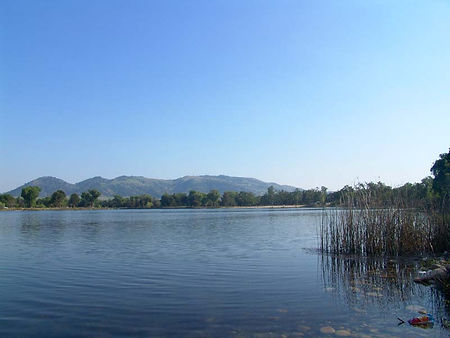THE KINGS RIVER AND CLIMATE CHANGE by David Cehrs, Ph.D. Hydrology, Former Kings River Land Trust Board President
There are now 122 years of annual flow data on the Kings River. Looking at the river data as well as the Fresno precipitation data, over the same time frame, it can be seen that things are changing. On the table below, I have split the Kings River and Fresno precipitation data into three groups, the first two groups are for 41 years each and the most recent group is for 40 years.

It can be seen that through time not only has it become wetter, increasing precipitation through time at Fresno, but more water is now flowing, on average, out of the Kings River drainage. This is a consequence of climate change; global air temperatures are warming and as a consequence warmer air can hold more water moisture which results in more precipitation. More precipitation over the Kings River drainage results in higher annual flows. But of even more importance, as shown in the second column of the table, the standard deviations of the 40 year increments, are increasing.

The standard deviation is a measure of the spread of the data, the larger the spread the greater the standard deviation. This increased standard deviation means the Fresno precipitation and the Kings River annual flows are becoming more diverse, more highs and lows and fewer values near the average, than in the past. The Kings River standard deviation for the most recent data set is greater than half the average flow for the period. This is a huge standard deviation but what it means is that the Kings River annual flows are now either too much, floods, or not enough, droughts, and very few years are near the average.
Climate change modeling has predicted that weather will become more chaotic now and in the future and this Kings River annual flow standard deviation is indicating just this point. It is also of note that the highest and lowest recorded annual flows have occurred in the last 40 year period.

The last part of the table indicates the number of years of consecutive below normal (below average) annual flows. This gives you an indication of how many drier to dry years can occur over a period of time. It is not uncommon to have five or six consecutive years of lower Kings River annual flows. This equates to drought conditions. But notice, earlier in the data set there were two sequences where fourteen or fifteen years out of eighteen years were dryer. That is an extended period of dry that today would severely impact all of us in the San Joaquin Valley.
The Kings River, like many other natural systems, is showing the impacts of climate change. These changes indicate that in the future we on the Kings River will be experiencing more, longer dry periods interspersed with single year wet events.
Keeping our lands open allows us to be more flexible on lands that are prone to flooding. It could also mean that if a parcel is prone to flooding and we can acquire money for a conservation easement that specifically speaks to allowing river flooding on the property, the easement might be worth more. If flood water spreads out on the land it slows the water down and spreads it out, which helps to lessen the flood potential downstream. As the water spreads out it then has more surface area to recharge the flood water, which helps the groundwater overdraft.
The impacts of our changing climate and our water supply to life locally is that we will experience more years of drought and when it is wet, it will be really wet – not all floods but a lot of them will be floods. Floods impact properties along the Kings River – they will be partially or completely under water and must plan accordingly – don’t put permanent structures in the flood plain, if you have permanent crops in the flood plain they too will be flooded.

